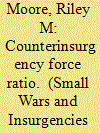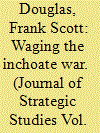|
|
|
Sort Order |
|
|
|
Items / Page
|
|
|
|
|
|
|
| Srl | Item |
| 1 |
ID:
115697


|
|
|
|
|
| Publication |
2012.
|
| Summary/Abstract |
Using a center of gravity model and GIS software, we measured how China's energy production and consumption centers changed (positions, movements, distances, and rates) from 1997 to 2009, thereby revealing regional differences in the relationship between supply and demand. We found that the centers of gravity for raw coal consumption, crude oil production and consumption, and electricity production and consumption moved southwest during the study period, whereas those of raw coal and natural gas production moved northwest and that of natural gas consumption moved southeast. The distances moved were largest for natural gas, followed by crude oil, but the distances were small for raw coal and electricity, indicating that their supply and demand pattern changed little during the study period. The gaps between supply and demand for raw coal, crude oil, and natural gas were large, and tended to increase. The production centers were northwest of the consumption centers, indicating that China's energy production is concentrated in the northwest, whereas consumption was concentrated in the southeast. This pattern resulted from the distribution of China's energy resource reserves and its energy development strategies. Recommendations are provided to reduce the gap between supply and demand.
|
|
|
|
|
|
|
|
|
|
|
|
|
|
|
|
| 2 |
ID:
128578


|
|
|
|
|
| Publication |
2013.
|
| Summary/Abstract |
As a consequence of intervention in Iraq and Afghanistan, force ratio for counterinsurgency (COIN) has come under increased scrutiny. Reduced to its essence, the issue is simply, 'How many troops does it take to get the job done?' This answer has been sought by the US military, academia, and think tanks. There have been numerous responses, culminating in several 'plug-and-play' equations for minimum force ratios in COIN operations. Due to the impossibility of determining precisely how many insurgent forces there are, it has become common to base force ratios on the population of the country. In the realm of policy, the question above is posed as, 'How many of our troops does it take to get the job done?
|
|
|
|
|
|
|
|
|
|
|
|
|
|
|
|
| 3 |
ID:
079235


|
|
|
|
|
| Publication |
2007.
|
| Summary/Abstract |
This article answers three questions: What is the nature of the Long War? How is progress (or lack thereof) to be assessed? Where is it likely to go next? An appreciation of Clausewitz shows that practical centers of gravity exist for the Long War, and that the conflict pivots upon the ability to persuasively link ideology to events via a strategic narrative. A close examination of an illustrative case study, the interaction between the US and the late Abu Musab al-Zarqawi in Iraq 2004 - 2006, shows that Al Qaeda has suffered a severe setback, but also that the nature of the war is set to shift yet again. Further tangible progress for the US requires waging the Long War as a global counterinsurgency based on a strategy of 'selective identification' (versus pure 'disaggregation') as well as an understanding of how to more effectively craft a strategic narrative.
|
|
|
|
|
|
|
|
|
|
|
|
|
|
|
|
|
|
|
|
|